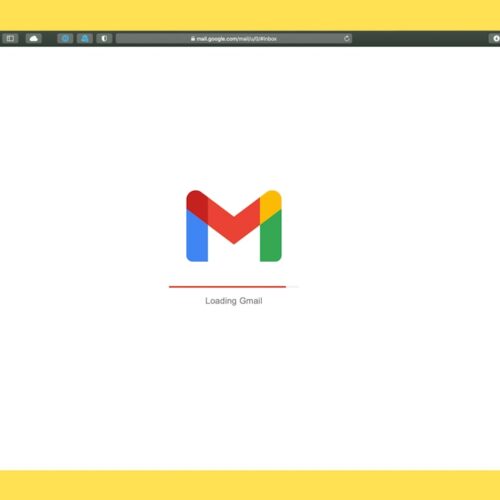In today’s digital landscape, email marketing has become an essential tool for businesses to connect with their audience and drive conversions. With the rise of social media and other digital marketing channels, some may question the effectiveness of email marketing. However, studies have shown that email marketing continues to be one of the most powerful and cost-effective ways to reach and engage customers.
Email marketing allows businesses to directly communicate with their audience, delivering personalized messages and offers right to their inbox. This level of personalization and direct communication is unmatched by other marketing channels. Additionally, email marketing allows businesses to build long-term relationships with their customers, nurturing them from leads to loyal brand advocates.
Key Takeaways
- Email marketing is a powerful tool for businesses to reach and engage with their audience.
- Segmentation plays a crucial role in email marketing success by allowing businesses to target specific groups of subscribers with tailored content.
- Benefits of segmentation include increased open and click-through rates, higher conversion rates, and improved customer retention.
- Effective segmentation involves analyzing subscriber data, creating relevant segments, and personalizing content based on subscriber behavior and preferences.
- Best practices for email campaigns targeted at specific segments include using clear and concise subject lines, including a strong call-to-action, and testing and optimizing campaigns for maximum impact.
The Role of Segmentation in Email Marketing
Email segmentation is the process of dividing an email list into smaller, more targeted segments based on specific criteria. This segmentation allows businesses to send more relevant and personalized content to their audience, increasing the chances of engagement and conversion.
Segmentation is crucial in email marketing because it helps businesses target specific audiences with content that is tailored to their needs and interests. By understanding the different segments within their email list, businesses can create more targeted campaigns that resonate with each segment. This not only increases the chances of engagement but also helps build stronger relationships with customers.
Benefits of Segmentation for Email Marketing Success
The benefits of segmentation in email marketing are numerous. Firstly, segmentation leads to higher open and click-through rates. When recipients receive emails that are relevant to their interests, they are more likely to open them and click on the links inside. This increased engagement translates into higher conversion rates and ultimately, better ROI for businesses.
Furthermore, segmentation allows businesses to deliver more personalized content, which leads to higher engagement. When recipients feel that an email is specifically tailored to them, they are more likely to read it thoroughly and take action. This personalization can be achieved through techniques such as dynamic content, personalized subject lines, and targeted offers.
Case studies and statistics support the benefits of segmentation in email marketing. For example, according to a study by MailChimp, segmented email campaigns had a 14.31% higher open rate and a 100.95% higher click-through rate compared to non-segmented campaigns. Another study by Experian found that personalized emails delivered six times higher transaction rates than non-personalized emails.
How to Segment Your Email List Effectively
| Segmentation Criteria | Benefits | Examples |
|---|---|---|
| Demographics | Personalized content, higher engagement rates | Age, gender, location, income |
| Behavioral | Targeted messaging, increased conversions | Purchase history, website activity, email engagement |
| Psychographic | Improved customer satisfaction, loyalty | Interests, values, personality traits |
| Customer Lifecycle | Relevant messaging, increased retention | New customers, loyal customers, inactive customers |
Segmenting an email list effectively involves several steps. The first step is to collect relevant data about your subscribers. This can include demographic information, purchase history, browsing behavior, and engagement with previous emails. The more data you have, the more targeted your segments can be.
Once you have collected the data, the next step is to analyze it and identify patterns or trends. Look for common characteristics or behaviors among your subscribers that can be used as segmentation criteria. For example, you may find that a certain age group is more likely to engage with your emails or that customers who have made a recent purchase are more likely to convert.
After analyzing the data, you can start segmenting your email list based on the criteria you have identified. This can be done manually or using automation tools provided by email marketing platforms. Automation tools make the process much easier and allow for real-time segmentation based on dynamic criteria.
When segmenting your email list, it’s important to test different segmentation strategies to see what works best for your audience. This can involve testing different criteria, such as age, location, or purchase history, and monitoring the results to see which segments perform better in terms of engagement and conversion.
Personalization Techniques to Boost Email Marketing Results
Personalization is a key component of effective email marketing and goes hand in hand with segmentation. Personalization involves tailoring the content of an email to the individual recipient based on their preferences, behavior, or other relevant data.
One technique for personalization is dynamic content, which allows businesses to show different content blocks within an email based on the recipient’s segmentation criteria. For example, a clothing retailer can show different product recommendations based on the recipient’s gender or browsing history.
Another personalization technique is using personalized subject lines. By including the recipient’s name or other relevant information in the subject line, businesses can grab their attention and increase the chances of the email being opened. Studies have shown that personalized subject lines can significantly improve open rates.
Targeted offers are another effective personalization technique. By offering discounts or promotions that are tailored to the recipient’s interests or purchase history, businesses can increase the chances of conversion. For example, an online bookstore can offer a discount on a book that the recipient has previously shown interest in.
Crafting Compelling Email Content for Segmented Audiences

Once you have segmented your email list and personalized your emails, it’s important to craft compelling content that resonates with each segment. The content of your emails should be relevant, engaging, and provide value to the recipient.
One effective way to create engaging email content is through storytelling. By telling a story that relates to your brand or product, you can capture the recipient’s attention and create an emotional connection. Stories have been used for centuries to convey messages and evoke emotions, and they can be just as powerful in email marketing.
Addressing pain points is another effective strategy for crafting compelling email content. By understanding the challenges or problems that your audience faces, you can provide solutions or offer advice that is relevant to their needs. This not only shows that you understand their pain points but also positions your brand as a trusted authority in your industry.
Including a clear call-to-action is essential in every email you send. The call-to-action should be specific and compelling, encouraging the recipient to take the desired action. Whether it’s making a purchase, signing up for a webinar, or downloading a free resource, the call-to-action should be clear and easy to follow.
Best Practices for Email Campaigns Targeted at Specific Segments
When creating email campaigns targeted at specific segments, there are several best practices to keep in mind. Firstly, it’s important to maintain a consistent tone and voice throughout your emails. This helps build brand recognition and ensures that your emails are easily recognizable by your audience.
Testing different subject lines is another best practice for email campaigns targeted at specific segments. Subject lines play a crucial role in whether or not an email gets opened, so it’s important to test different variations to see what resonates best with each segment. A/B testing can be used to compare the performance of different subject lines and optimize for better results.
Optimizing emails for mobile devices is essential in today’s mobile-first world. Studies have shown that the majority of emails are now opened on mobile devices, so it’s important to ensure that your emails are mobile-friendly. This includes using responsive design, optimizing images and text for smaller screens, and testing your emails on different devices and email clients.
Measuring and Analyzing the Impact of Segmentation on Email Marketing
Measuring the impact of segmentation on email marketing involves tracking key metrics such as open rates, click-through rates, conversion rates, and revenue. By comparing these metrics between segmented and non-segmented campaigns, you can determine the effectiveness of your segmentation strategy.
Analyzing the data requires looking for patterns or trends in the metrics and making data-driven decisions to improve email marketing performance. For example, if you notice that a certain segment has a significantly higher open rate than others, you can analyze the content and subject lines of those emails to identify what resonates with that segment.
It’s also important to track revenue generated from segmented campaigns to determine the ROI of your email marketing efforts. By comparing the revenue generated from different segments, you can identify which segments are the most valuable and allocate resources accordingly.
Common Mistakes to Avoid in Email Segmentation
While segmentation can be highly effective in email marketing, there are some common mistakes that businesses should avoid. One common mistake is over-segmenting, where businesses create too many segments that are too small to be effective. Over-segmenting can lead to a lack of resources and dilution of the message, resulting in lower engagement and conversion rates.
On the other hand, under-segmenting is another common mistake to avoid. Under-segmenting involves not dividing your email list into specific segments and sending the same generic message to everyone. This can lead to lower engagement and conversion rates as recipients receive emails that are not relevant to their needs or interests.
Not updating segmentation criteria regularly is another mistake to avoid. As your business evolves and your audience changes, it’s important to update your segmentation criteria to ensure that your emails remain relevant and targeted. Regularly reviewing and updating your segmentation criteria will help you stay ahead of the curve and continue delivering personalized content to your audience.
Achieving Optimal Email Marketing Results through Segmentation
In conclusion, segmentation is a powerful tool in email marketing that allows businesses to deliver more relevant and personalized content to their audience. By segmenting their email list effectively and crafting compelling content for each segment, businesses can increase engagement, drive conversions, and build stronger relationships with their customers.
Implementing segmentation strategies may require some initial effort in terms of data collection, analysis, and testing. However, the benefits far outweigh the investment as businesses can achieve higher open and click-through rates, better engagement, and improved RO
To achieve optimal email marketing results through segmentation, it’s important to continuously measure and analyze the impact of your segmentation strategy. By tracking key metrics and making data-driven decisions, you can optimize your email marketing performance and stay ahead of the competition.
In conclusion, segmentation is a powerful tool that businesses should not overlook in their email marketing efforts. By implementing effective segmentation strategies and personalization techniques, businesses can achieve higher engagement, conversion rates, and ultimately, better results from their email marketing campaigns.
If you want to learn more about email segmentation and how it can benefit your marketing strategy, check out this informative article on my blog: Email Segmentation: Boosting Engagement and Conversion Rates. This article dives deep into the importance of segmenting your email list and provides practical tips on effectively implementing segmentation strategies. Don’t miss out on this valuable resource that can help you optimize your email campaigns and drive better results.


